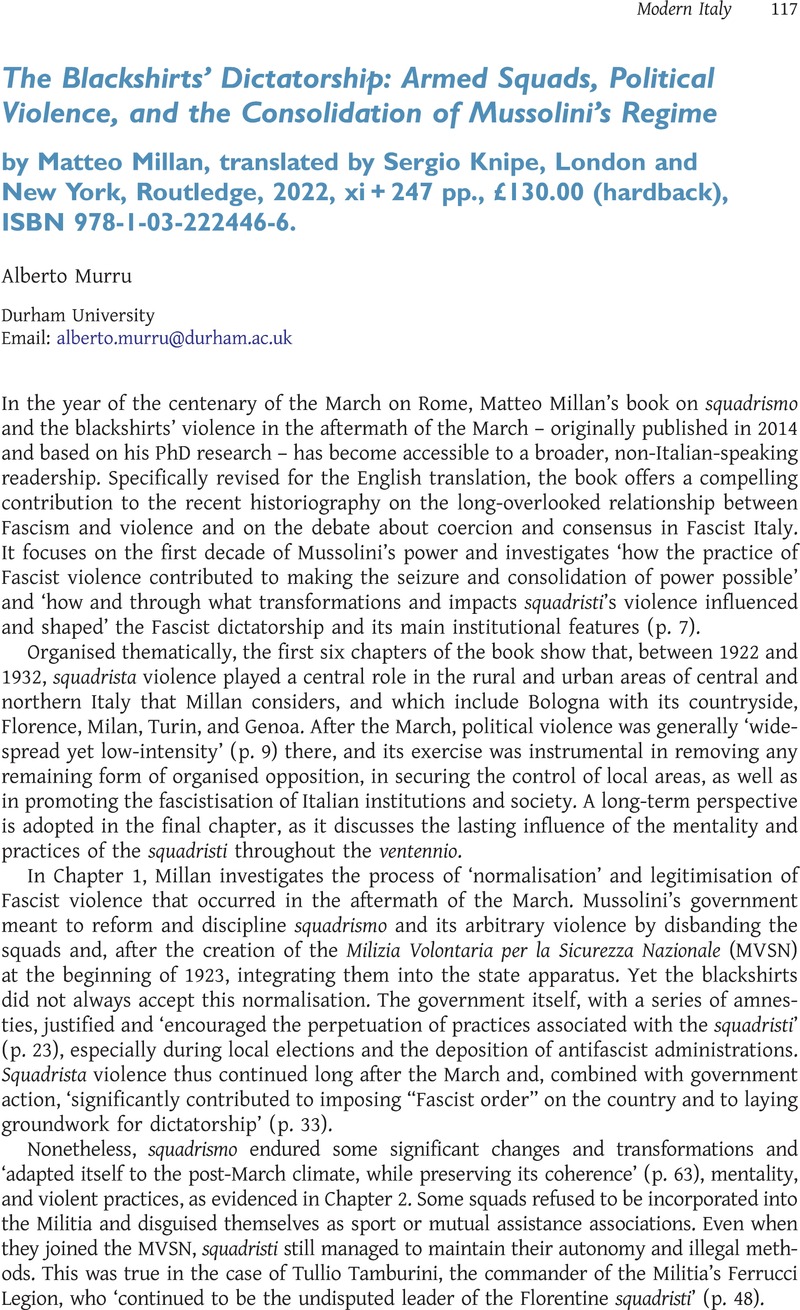No CrossRef data available.
Article contents
The Blackshirts’ Dictatorship: Armed Squads, Political Violence, and the Consolidation of Mussolini's Regime by Matteo Millan, translated by Sergio Knipe, London and New York, Routledge, 2022, xi + 247 pp., £130.00 (hardback), ISBN 978-1-03-222446-6.
Review products
The Blackshirts’ Dictatorship: Armed Squads, Political Violence, and the Consolidation of Mussolini's Regime by Matteo Millan, translated by Sergio Knipe, London and New York, Routledge, 2022, xi + 247 pp., £130.00 (hardback), ISBN 978-1-03-222446-6.
Published online by Cambridge University Press: 03 July 2023
Abstract
An abstract is not available for this content so a preview has been provided. Please use the Get access link above for information on how to access this content.

- Type
- Book Review
- Information
- Copyright
- Copyright © The Author(s), 2023. Published by Cambridge University Press on behalf of the Association for the Study of Modern Italy


